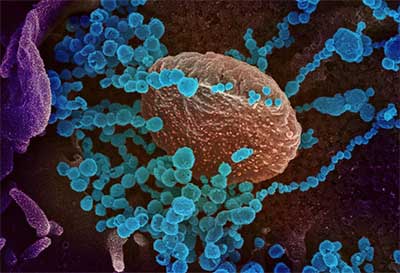Chapare Virus
Why in News?
- The US Centers for Disease Control and Prevention(CDC) recently found a rare virus in Bolivia. The virus in question is capable of human-to-human transmission, and can cause haemorrhagic fevers like Ebola.
About
- The rare virus was discovered due to ongoing efforts of scientists around the globe to avert future pandemics like COVID-19, which has crippled the world and infected millions.
- The biggest outbreak of the ‘Chapare virus’ was reported in 2019, when three healthcare workers contracted the illness from two patients in the Bolivian capital of La Paz. Two of the medical professionals and one patient later died.
- Prior to that, a single confirmed case of the disease and a small cluster were documented in the Chapare region over a decade ago.
- While governments, scientists and health experts across the world struggle to contain a second wave of coronavirus outbreaks, researchers at the US’ CDC are now studying the virus to see if it could eventually pose a threat to humankind.
- The findings of the Chapare virus were presented at the annual meeting of the American Society of Tropical Medicine and Hygiene (ASTMH).
- Human-to-human transmission highlights the importance of studying this virus, for it could cause a future outbreak.
Chapare Virus
- The Chapare hemorrhagic fever (CHHF) is caused by the same arenavirus family that is responsible for illnesses such as the Ebola virus disease (EVD).
- According to the CDC website, arenaviruses like the Chapare virus are generally carried by rats and can be transmitted through direct contact with the infected rodent, its urine and droppings, or through contact with an infected person.
- The virus, which is named Chapare after the province in which it was first observed, causes a hemorrhagic fever much like Ebola along with abdominal pain, vomiting, bleeding gums, skin rash and pain behind the eyes. Viral hemorrhagic fevers are a severe and life-threatening kind of illness that can affect multiple organs and damage the walls of blood vessels.
- However, not a lot is known about the mysterious Chapare virus. Scientists believe that the virus could have been circulating in Bolivia for many years, even before it was formally documented. Infected people may have been misdiagnosed with dengue as the mosquito-borne illness is known to cause similar symptoms.
Symptoms
According to the CDC, symptoms include-
- fever,
- abdominal pain,
- bleeding gums,
- vomiting,
- skin rashes, and
- pain behind the eyes.
How is the Chapare hemorrhagic fever treated?
- Owing to no virus specific treatments, most patients receive care through intravenous fluids.
- The CDC website lists maintenance of hydration, management of shock through fluid resuscitation, sedation, pain relief and transfusions as the supportive therapy that can be administered on patients suffering from CHHF
Current status of discoveries about the Chapare Virus
- CDC revealed that by examining the 2019 outbreak in Bolivia, they had found the virus can spread from person to person, particularly in healthcare settings.
- The researchers said that based on the evidence available, healthcare workers are at higher risk of contracting the illness and must thus be extremely cautious while dealing with patients to avoid contact with items that could be contaminated with their blood, urine, saliva or semen.
- Viruses that spread through bodily fluids can be brought under control a lot easier than respiratory viruses.
- They found that the medical resident who succumbed to the disease could have been infected while suctioning saliva from a patient.
- The researchers also found fragments of genetic entities known as RNA, associated with Chapare, in the semen of one survivor 168 days after he was infected. This suggests that the disease could also be sexually transmitted.
- They also discovered signs of the virus in rodents in the “home and nearby farmlands” surrounding the first person infected during the 2019 outbreak.
- Rodent species, in which Chapare viral RNA was identified, is commonly known as the pigmy rat and is found across Bolivia and in several of its neighbouring countries.
- New sequencing tools will allow the CDC experts to quickly develop an RT-PCR test — much like the one used to diagnose Covid-19 — to help them detect Chapare.
- The researchers’ focus now is to identify how the disease is spreading across the country and whether rodents are in fact responsible for its spread.








